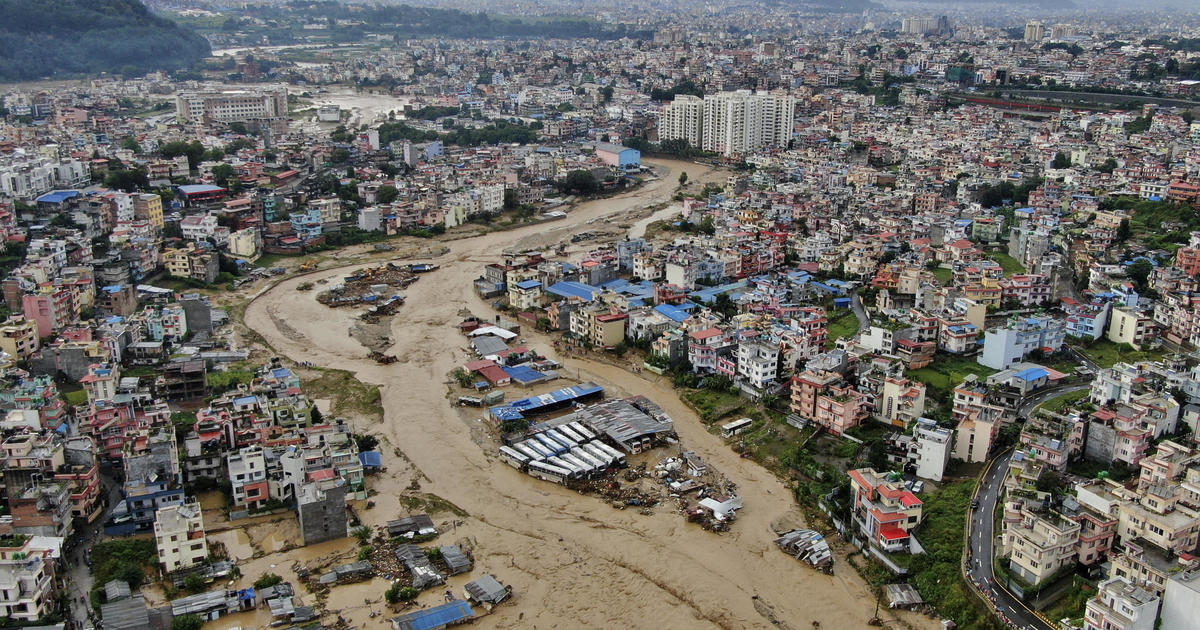The relentless monsoon rains that lashed Nepal from Friday night into the weekend caused catastrophic flooding and landslides, resulting in a devastating loss of life and widespread disruption. At least 66 people perished, with another 69 still missing as of Saturday, according to official reports. This tragic event highlights the vulnerability of Nepal’s infrastructure and population to extreme weather events, emphasizing the urgent need for improved disaster preparedness and mitigation strategies. The sheer scale of the disaster, affecting numerous regions and disrupting vital transportation links, underscores the severity of the situation and the significant challenges facing rescue and relief efforts. The continuous rainfall, expected to persist throughout the weekend, further exacerbated the crisis, complicating rescue operations and hindering access to affected areas. This underscores a critical need for robust infrastructure development and better early warning systems to minimize the impact of future such events.
Devastation Across Nepal: Casualties and Damage
The torrential rains triggered widespread flooding and landslides across Nepal, leaving a trail of destruction in their wake. The death toll reached at least 66, with a further 69 individuals reported missing, underscoring the severity of the disaster. The capital, Kathmandu, bore the brunt of the damage, with 34 fatalities reported within the city limits. Beyond the human cost, the flooding caused significant damage to property and infrastructure. Many houses were inundated, forcing residents to seek refuge on upper floors or elsewhere. A large area south of Kathmandu was submerged, highlighting the extensive reach of the flooding.
Kathmandu’s Impact
Kathmandu experienced significant disruption. The flooding submerged large parts of the city, affecting numerous homes and displacing residents. Swollen rivers overflowed their banks, inundating residential areas. Power outages and internet disruptions further compounded the challenges faced by residents. Rescue operations, including the use of army helicopters to evacuate stranded individuals, underscore the scale of the emergency response required. The city’s infrastructure was significantly impacted, disrupting essential services and highlighting the vulnerability of urban areas to extreme weather. Even after the immediate crisis subsided, extensive repair and recovery work remained needed.
Nationwide Effects and Rescue Efforts
The impact extended far beyond Kathmandu. The widespread flooding and landslides caused severe disruptions across the entire country. Three major highways, including the crucial Prithvi Highway connecting Kathmandu to the rest of the nation, were blocked by landslides, severely hampering rescue and relief efforts. Heavy equipment was deployed to clear the roads and restore vital transportation links. The government mobilized all divisions of the security forces, including the army, to assist in the rescue and relief operations. The sheer scale of the damage and the logistical challenges presented, however, highlight the considerable need for better disaster preparedness and response infrastructure.
The Role of the Nepalese Government and Relief Efforts
The Nepalese government swiftly responded to the crisis, issuing flood warnings and implementing emergency measures prior to the onset of the severe weather. Despite this preparedness, the scale of the flooding overwhelmed resources. Following the initial warnings of potential heavy rainfall and floods, the government actively engaged in disaster response, deploying security forces and utilizing resources from the army, in order to carry out the large-scale rescue efforts required following the devastating event. The Home Ministry and other government bodies worked tirelessly to collect information, coordinate rescue efforts, and provide aid to those affected. However, the magnitude of the disaster tested the limits of their capabilities, emphasizing the need for further improvements in disaster preparedness and infrastructure development. The focus, according to the government, was placed on rescuing individuals trapped by floods and offering support to those impacted.
Challenges in Relief and Recovery
The logistical challenges associated with delivering aid and carrying out rescue operations were considerable, given the extent of the damage. Landslides had cut off access to many affected communities, while damaged infrastructure made it difficult to distribute necessary resources and supplies. Moreover, continued heavy rainfall and potential further landslides added extra risks to rescue and relief activities, compounding challenges related to terrain and access. The government’s efforts required the seamless collaboration and efficient organization of various teams and resources, testing the resilience and capability of both governmental and non-governmental systems. It also highlights a need for improvement in emergency preparedness.
Monsoon Season and Future Preparedness
Nepal’s monsoon season, characterized by intense rainfall, occurs annually, typically from June to mid-September. While this season provides crucial water for agriculture, it also brings significant risk of flooding and landslides, causing periodic major disruption and resulting loss of life. The recent disaster serves as a stark reminder of the critical need to invest in improving Nepal’s disaster preparedness and infrastructure. The country must focus on strengthening early warning systems, developing more resilient infrastructure, and implementing effective disaster management plans to minimize the devastating impact of future monsoon seasons. While governmental support is crucial, improving coordination between state and non-governmental organizations is crucial to ensure effective aid is provided.
Strengthening Resilience and Prevention
Improvements in infrastructure and technology are also needed. Investing in early warning systems that accurately predict rainfall, predict when flooding and landslides are likely, and then promptly warn at risk populations is absolutely essential. Improved infrastructure, such as better drainage systems and robust transportation networks that are resistant to damage caused by floods and landslides can also improve the resilience of Nepal’s population. Moreover, better preventative measures like reforestation and hillside stabilization are required in order to minimize the potential negative impact of extreme weather events and flooding. The key is preventative action, rather than damage control only after the fact.
Take Away Points:
- The recent flooding and landslides in Nepal highlight the devastating impact of extreme weather events.
- At least 66 people died, and many more are missing. Kathmandu and areas surrounding the capital suffered the worst impact.
- The disaster exposed vulnerabilities in Nepal’s infrastructure and disaster preparedness systems.
- There is an urgent need to invest in improving early warning systems, infrastructure resilience, and disaster management planning.
- Continued heavy rains exacerbated the situation and caused wide-ranging logistical difficulties.




